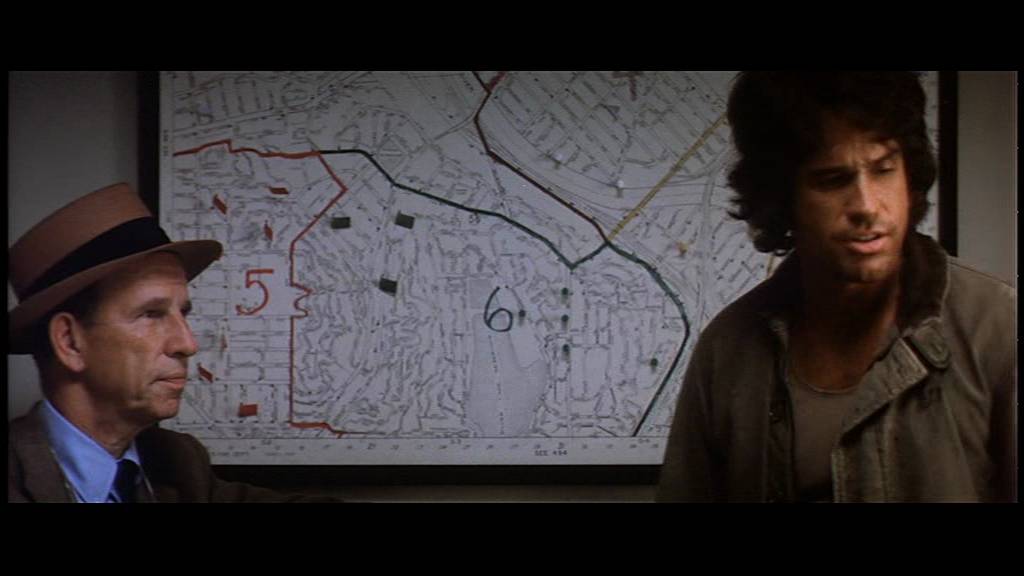The horrifying assassinations of the 1960s generated countless conspiracy theories that continued to rattle about in the 1970s, particularly after Watergate further damaged the public’s faith in once-respected institutions. During this period, Alan J. Pakula was arguably the film maker who most effectively translated the public’s anxieties onto the screen. The two best known of his “paranoia triology” are the Oscar winners Klute and All the President’s Men. But don’t overlook the less commonly recalled but very fine member of the troika: 1974’s unnerving The Parallax View.
The film’s opening sequence, set at the top of Seattle’s space needle, grabs viewers by the throat. What seems a banal political event suddenly turns violent, and through a series of rapid cuts the audience is as disoriented as the terrified characters on screen as they wonder what exactly they just saw. In the ensuing months, many of the witnesses come to premature ends, leading raffish journalist Joe Frady (Warren Beatty) to investigate, against the advice of his hard-headed, fatherly editor (Hume Cronyn, effortlessly at home in his role). Frady discovers that a mysterious corporation is recruiting sociopathic killers and goes undercover to investigate. He seems to be making progress in infiltrating the nefarious cartel, but is he really just walking into the web of a hungry spider who is spinning all the strands?

The Parallax View provides moments of high suspense and also carries off well that essential of paranoia films: The exchanges between the lead character and the trusted friend who thinks the “conspiracy” is all imagined (Nice touch: Cronyn’s office is crammed with memorabilia from his work with the Boy Scouts). The performances are believable throughout, which helps the film survive its more credibility-straining moments.
The late Gordon Willis, one of the most respected cinematographers of the 1970s, gives the film a distinctive look appropriate to its tone. There are many long, lonely shots taken far from the action, along with Willis’ signature fondness for shadows. The opening and closing shots, of government investigatory commissions proclaiming “nothing to see here, move along, there’s no conspiracy” as the camera moves in and out, ultimately arriving at a dark, distorted anamorphic image, are perfect bookends for the film. Combined with the movie’s minimalist use of sound, Willis’ superb work suffuses the movie with a sense of unease.
The film is not without shortcomings. As in some other Pakula films (e.g., Consenting Adults), certain plot elements can’t survive strict logical scrutiny. How can second-rate journalist Joe Frady drive like a NASCAR champion and fight like James Bond? Why doesn’t he ever have deadlines at his newspaper and why, beyond the needs of the script, does his editor keep handing him piles of cash to pursue his story? Another potential weakness: Joe Frady is not that appealing of a person, so if you really don’t like Warren Beatty as a star, you may not feel much sympathy for the protagonist.
Flaws notwithstanding, Parallax View is an effective, disturbing piece of cinema. Its perspective is ultimately gloomy, but that doesn’t diminish its entertainment value or emotional impact one iota. This is a movie that stays with you, like a microphone the CIA has attached to your cell phone.
p.s. For those of you who are not old enough to remember and therefore might find one key scene of this film unbelievable: In the 1970s, you really could board an airplane without a ticket and check luggage onto a flight on which you were not yourself a passenger. Also, there was good service in coach. Really.

